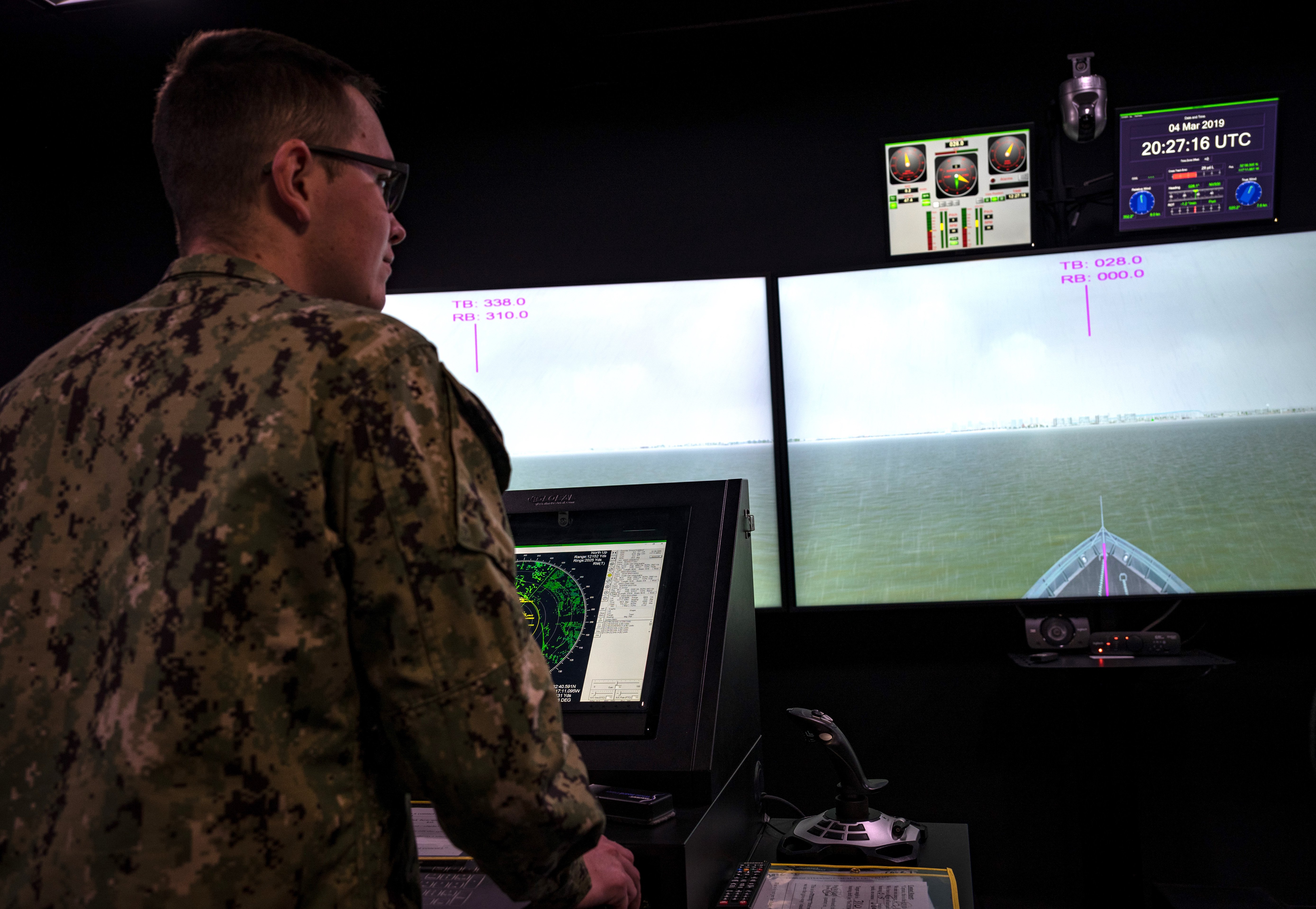
The decade-long $6 billion investment in live, virtual and constructive training for the surface community is paying dividends in the Red Sea, the Navy’s director of surface warfare said Tuesday.
Instead of “figuring out on the fly” how to apply “defense in depth,” as USS Mason (DDG-87) had to do when attacked by two cruise missiles in the Red Sea in 2016, today’s crew was prepared to respond to these kinds of threats, said Rear Adm. Fred Pyle. At the time, the missiles were presumed to have been fired by Iranian-backed Houthis in Yemen.
“We can operate anywhere, anytime within international law,” Pyle said during a Center for Strategic and International Studies event. Currently, the Navy uses a “layered in-depth defense” against the Houthi unmanned aerial drones and missiles launched over the Red Sea and Gulf of Aden. Warships use the Standard Missile family at the longest ranges, Sea Sparrow at intermediate range and the 20 mm guns close in, he said.
“We could not be more pleased” with the performance of Aegis, Standards Missiles, SPY radar systems and allies and partners, as well as the carrier air wings in Operation Prosperity Guardian, which is the mission to protect merchant shipping in the Red Sea, Pyle said.
The Navy is taking steps to measure fatigue, including “how they are doing physically when they take the watch,” and re-integrating with family and life ashore as a result of the high tempo in the Red Sea since October.
The General Accountability Office found in an October report that “Navy data shows that prolonged sleep deprivation can impair performance to levels similar to intoxication” and had a direct impact on readiness.
“Do I have some other metric than, ‘put me in, captain'” to judge whether a sailor is too fatigued to do his/her job or stand watch, Pyle asked rhetorically.
“We are going to find ways” to shoot down threats and improve the “cost-exchange ratio,” he said. “We didn’t know in September we were going to be in a fight in the Red Sea and expending munitions” at the rate these operations demand.
In the future, the Navy is looking for “soft-kills” with non-kinetic effects, like directed energy from high-powered lasers or microwaves, “that allow us to keep missiles away from the ship.” The technical challenge for lasers to have high power, range and be able to overcome weather conditions remains high. “We’ve been working on this for two decades and only have” one laser installed on USS Preble (DDG-88), he said.
The Navy is likewise focusing on finding solutions in re-arming weapons, which would be critically important in a high-end conflict with a power like China, Pyle said.
The operations in the Red Sea highlight the U.S. Navy’s need to ramp up the production of munitions, Pyle said. To that end, the Navy is sending a clear demand signal to industry that it needs to build up the stockpiles, and Congress is supporting the move through the supplemental funding request and looking ahead to the Fiscal Year 2025 appropriations bill. He added that like the shipbuilding and repair industry, munitions manufacturers have challenges with a “green labor force,” workers’ concerns over decent affordable housing close to where they work and plant conditions as it ramps up to new demands.
The Navy also is re-certifying older munitions to ensure they can safely go back into the munitions inventory.
“We’re executing that mission well,” Pyle said.
The Navy still has fleet modernization and repair plans in place. Pyle noted the $17 billion in shipbuilding and modernization of ships and weapons system, the sea service’s need for “smaller warships,” like the Constellation-class frigates, and in the more distant future the “next hull DDG(X).”
He also saw a fleet “in the next several decades” that is 60 percent manned.
“Think weeks where we don’t want to put a sailor in [the unmanned] platforms” to keep them on mission. He also envisions the Large Unmanned Surface Vessels carrying missiles as potential replacements for the Ticonderoga-class cruisers the Navy wants to retire.
Pyle said the average age of a cruiser is 34 years, and its service life was projected to be 35 years.
“We’re not going to throw out all the good procedures we learned over four decades with Aegis” when the unmanned vessels and the Integrated Combat System are in place, he said.





